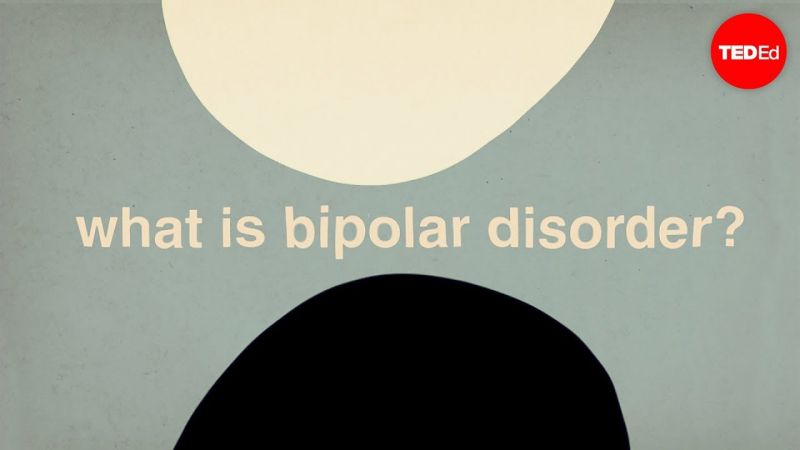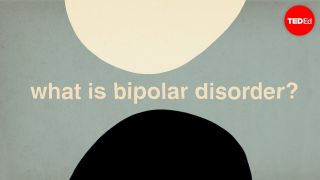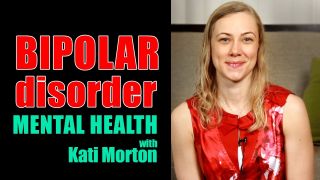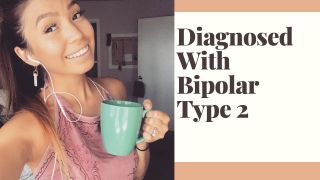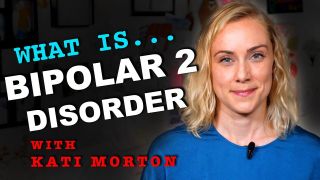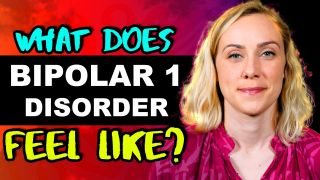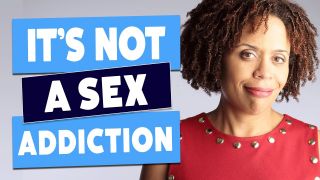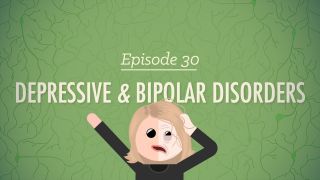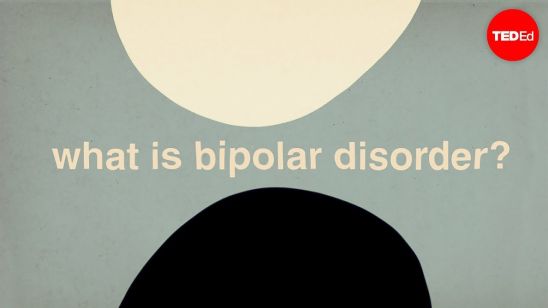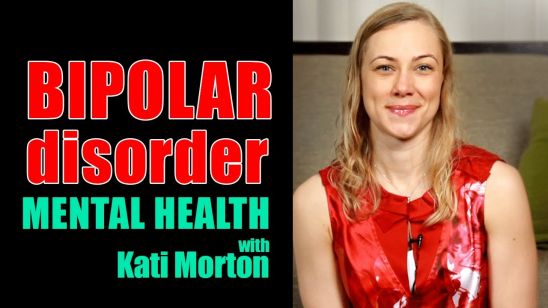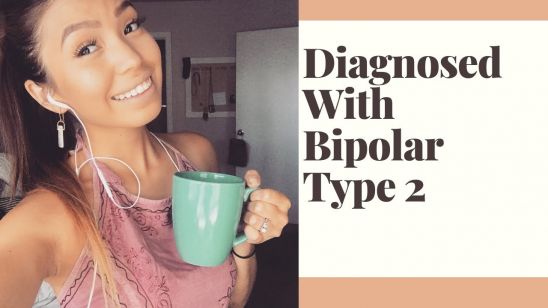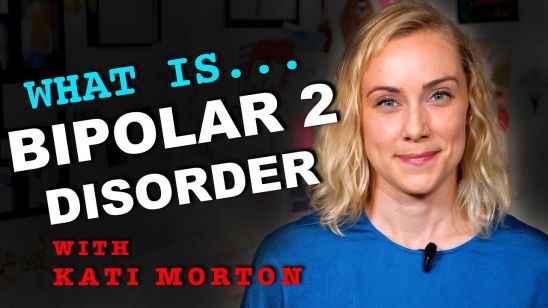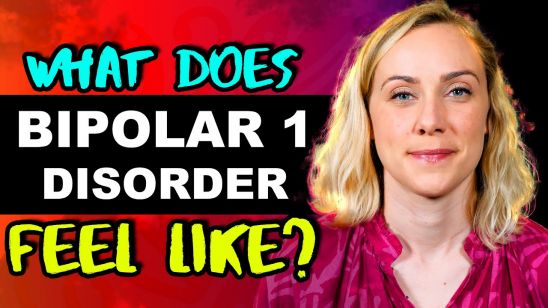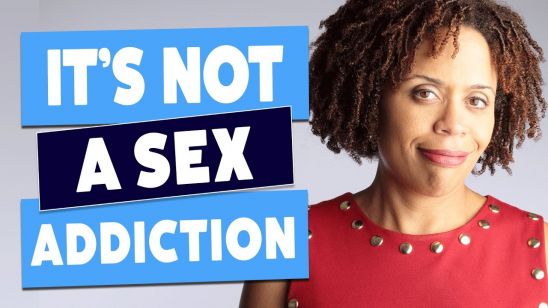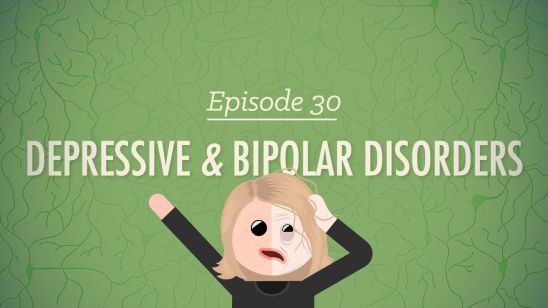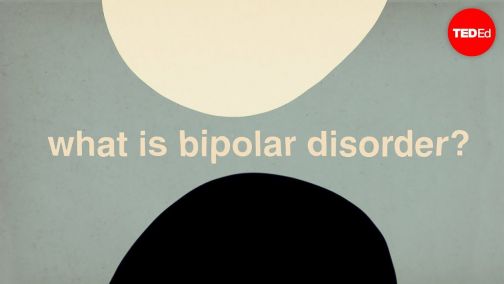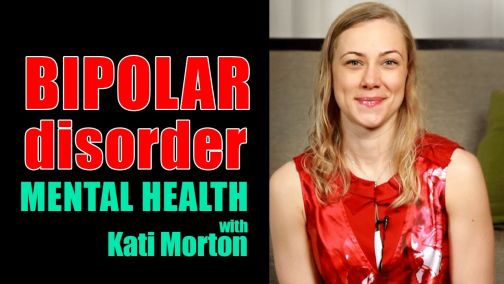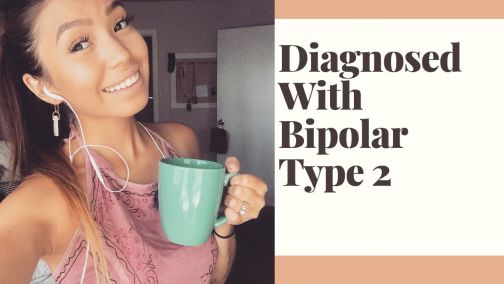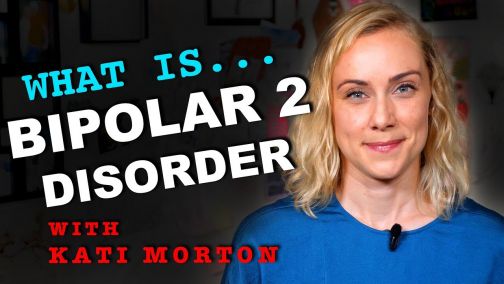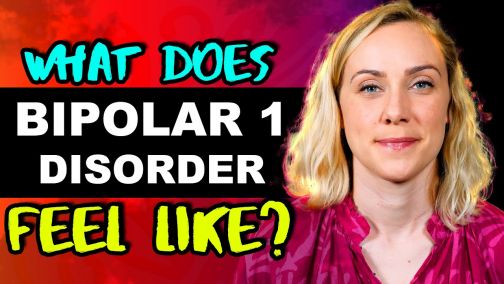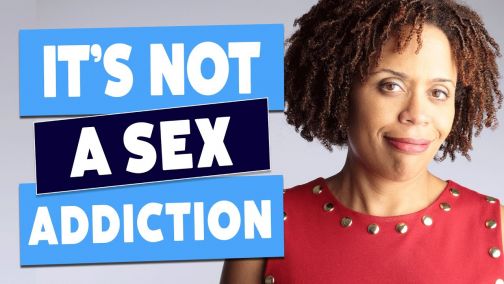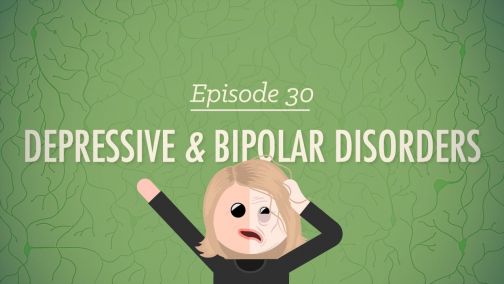Bipolar Disorder
Previously called Manic Depression
What is it?
We all have ups and downs. Good days have the power to leave us feeling happy and confident, whereas bad ones can make us frustrated and sad. These changes in mood are a normal part of life. However, for some people, mood swings aren’t occasional and dependent on recent happenings. They're extreme, uncontrollable and debilitating.
This is called bipolar disorder, formerly known as manic depression. Bipolar is a mood disorder characterized by intense emotional highs (aka manic/hypomanic episodes) and intense emotional lows (aka depressive episodes). During a manic episode, a person experiences high levels of energy, euphoria, irritability and impulsivity. During a depressive episode, they experience very low levels of energy, alongside feelings of hopelessness.
There are three primary types of Bipolar — Bipolar I, Bipolar II, and Cyclothymic Disorder (also called cyclothymia). Some people experience symptoms that don't easily fit into one of these three categories and instead fall under "Other Specified/Unspecified" type. Roughly 2.6% of the U.S. population is diagnosed with Bipolar, of which, 83% of cases are considered severe.
What are the symptoms?
The three primary characteristics of Bipolar disorder, regardless of type, are mania, hypomania and depression. Mania and hypomania share the same symptoms, however, hypomania is less intense and doesn’t involve hallucinations or breaks from reality.
During manic and depressive episodes, a person’s ability to accomplish daily tasks is severely impacted. They may struggle at work, home and in social settings. Some episodes include a combination of manic and depressive symptoms. These are called “mixed feature” episodes.
Manic/Hypomanic Symptoms:
- Having very high levels of energy
- Acting overly energized, jumpy or wired
- Feeling high or elated
- Having trouble sleeping (insomnia)
- Getting angry or aggravated easily
- Talking rapidly about many different things
- Experiencing racing thoughts
- Engaging in risky behavior, such as spending large amounts of money or having lots of sex
- Experiencing a break from reality (psychosis)
Depressive Symptoms:
- Having very low levels of energy
- Feeling down, hopeless and sad
- Having low self-worth
- Not being interested in the things you used to love
- Having trouble sleeping (insomnia) or sleeping too much (hypersomnia)
- Gaining or losing a significant amount of weight
- Struggling to concentrate and complete work
- Feeling fatigued and slowed down
- Having repetitive thoughts about death or suicide
All Bipolar types come with intense changes in mood, energy and behavior. However, the severity of these episodes and rate at which they occur are not the same.
- Bipolar I: Defined by intense manic episodes that last at least 7 days. In some cases, psychosis may occur and warrant hospitalization. Following manic episodes are often depressive episodes lasting at least 2 weeks.
- Bipolar II: Defined by a pattern of depressive and hypomanic episodes, but no manic episodes.
- Cyclothymic Disorder: Defined by periods of depressive and hypomanic symptoms over the course of at least 2 years for adults, and 1 year for children/teens. These symptoms are less severe than “typical” depressive and hypomanic episodes.
- Other Specified/Unspecified: Any cases that do not meet the above criteria, or are the result of substance use and/or another medical condition.
What are some common warning signs?
Bipolar isn’t always easy to spot. Less severe symptoms of mania and depression can be passed off as normal moodiness. If you think a loved one is struggling, pay close attention to how their doing at work, school, home and in social settings. Make sure to track their behavior over an extended period of time.
Ask yourself the following questions:
- Are they struggling to complete tasks at work, either because they’re too preoccupied with other interests, or because they seem distant and unmotivated?
- Do they go through periods of high activity and energy, followed by intense lulls?
- During high energy periods, are they engaging in behavior that seems out of character? For example, considering having an affair or spending a lot of money.
- Do they seem “high on life”?
- Do they mention feeling “godlike” or “famous”?
- Are they dealing with substance abuse issues or using alcohol and drugs to regulate their mood?
If so, they might be battling bipolar disorder and you should find time to talk to them about their symptoms.
What causes Bipolar?
The exact cause of Bipolar is unknown. Doctors believe a range of factors play a role in its development, including:
Genetics
Certain people are more likely to develop bipolar if they have a family history of depressive conditions.
Brain chemistry
Doctors know that neurotransmitters in the brain - like serotonin, dopamine and norepinephrine - impact our levels of happiness. Bipolar or other mood disorders may be caused by an imbalance in these chemicals. SSRIs are often prescribed in hopes of rebalancing brain chemistry and stabilizing mood.
Hormones
Hormonal changes have been associated with depression. People going through puberty, menopause or living with thyroid disorders often see a connection between hormone production and their emotional state.
Trauma
Experiencing a stressful or traumatic event, such as a car accident or sexual assault, is thought to trigger the condition in some people.
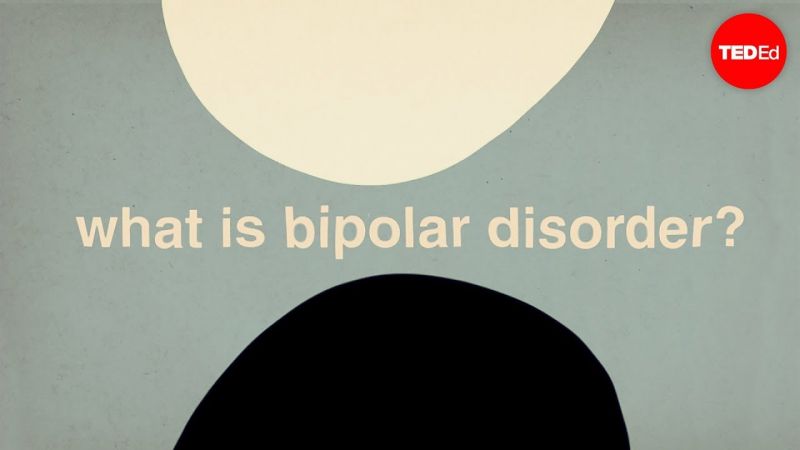
What is Bipolar Disorder?
The word bipolar means ‘two extremes.’ For the many millions experiencing bipolar disorder around the world, life is split between two different realities: elation and depression.
How is it treated?
There are two primary treatment methods for Bipolar — psychotherapy and medication. Healthy lifestyle habits can also help people cope. For example, eating well, exercising regularly, tracking mood swings, and staying away from alcohol and drugs.
The most common psychotherapies for treating Bipolar, are Cognitive Behavioral Therapy (CBT) and Interpersonal and Social Rhythm Therapy (IPSRT).
CBT is a therapeutic model that challenges negative thinking patterns and behaviors. It’s rooted in the idea that our attitudes greatly impact how we think and behave. In CBT, a therapist will help you replace negative thinking patterns and behaviors with more positive ones.
For example, a person with depression might wake up and think “life is so hard, I’m not sure it’s worth trying.” CBT will teach them to recognize that as an unhelpful thought, and replace it with something more productive like “life gets hard, but I have the power to push through.” CBT can be administered one-on-one, or via group therapy.
One form of CBT called Dialectical Behavior Therapy (DBT) has recently been found to benefit people with bipolar. DBT focuses on striking balance between where we are, and where we want to be. It promotes growth without a sense of shame for our current state.
IPSRT is a form of therapy that helps people maintain a healthy emotional state by creating productive routines. These can include how and when they sleep, eat, exercise or work. The goals of IPSRT are to establish sustainable routines, minimize daily stressors, and learn skills that will make symptom management easier.
Family-based therapies may also be recommended to help teach parents, siblings and other family members how to support a loved one with Bipolar.
There are a wide range of medications used to treat the condition. What a doctor recommends while depend on disorder type, severity and any co-occurring conditions. Frequently prescribed medications include:
Mood stabilizers
These help control manic and hypomanic episodes. Examples include Lamictal, Depakote, Lithobid and Equetro.
Antipsychotics
Also known as neuroleptics or major tranquilizers, these help control symptoms of psychosis. Examples include Zyprexa, Risperdal, Seroquel), Abilifyand Latuda.
Antidepressants
These help minimize symptoms of depression. There are many different types of antidepressants, including SSRIs, SNRIs, MAOIs and TCAs. Examples include Zoloft, Lexapro, Paxil, Celexa, Prozac, Effexor and Cymbalta.
Anti-anxiety medications
Also called Benzodiazepines, these help minimize anxiety symptoms and improve sleep. Examples include Xanax, Klonopin, Valium and Ativan.
You can learn more about Bipolar medications here.
It’s important to remember that treatment plans are personalized. If you’re seeking help, make sure you work one-on-one with a doctor to create a plan that fits your needs. Just because a medication or therapy helps someone else recover, doesn’t mean it’ll be the right solution for you. Don’t ever feel guilty about asking for help, taking meds or going to therapy. Addressing your mental health is a productive and courageous thing to do.
How can I help a loved one with Bipolar?
It can be hard to know how to react when someone you love isn’t doing well. Do they want to talk about it, or would they prefer to keep their experiences private? Will you push them away by starting the conversation?
There are no easy answers to these questions. Every person handles their mental health differently. That said, we all want to feel loved and supported. Showing someone that you’re invested in their wellbeing can make a world of difference. Here are some ways to do so:
Educate yourself
Read up on symptoms, treatment options, and healthy living recommendations. Try and understand what your loved one is going through so you are better equipped to talk to them about it. This will also make you a valuable resource when it comes time to find treatment.
Encourage healthy living
Sleeping well, eating nutritional foods, staying active and limiting substance use can be game changers for someone during a depressive episode. If they’re surrounded by people who promote this kind of lifestyle, they’re more likely to form healthy habits of their own. Try joining a fitness class together, or cooking meals at home using healthy ingredients.
Advocate treatment
Asking for help can be hard. Societal stigma often keeps people from opening up to others about their symptoms. Support your loved one by helping them research different treatment methods, or doctors in their area. If they’d like, go to a few sessions with them. Remind them that there’s nothing weird about getting help, and that you’re proud of them for following through.
Listen
It’s common for people battling depression to feel alone. Make time for meaningful conversations. Ask them how they’re doing. Let them talk and make sure to not discount their emotions. It is not your job to fix them, just to be there. Avoid saying things like “this is just a phase” or “it could be worse.” Oftentimes, people with depression are worried about being “burdensome” and this kind of language can make them feel as if those fears are true.
Help them out
During manic and depressive episodes, it can be hard to accomplish important tasks, such as preparing meals, paying bills and cleaning. Make time to do these things with your loved one so they feel supported and don’t get bogged down by unfinished work.
Be honest with them
Don’t sugar coat their symptoms or avoid giving your honest opinion. You want to support your loved one, but not indulge the negative habits their Bipolar wants them to form. Ignoring red flags will often lead to bigger issues later down the line.
Be patient
Don’t take it personally if they lash out at you, don’t answer text messages or socialize less. They are battling something that’s very hard to overcome. Their distance has nothing to do with who you are as a person. Keep showing up for them even when it feels like it’s not helping. The act alone lets them know that they have people in their life who care.
What other resources are out there?
Want to learn more, find a doctor, join a support group or speak to a counselor? The below resources might be able to help:
- National Suicide Prevention Lifeline
- Crisis Text Line
- BetterHelp
- Psychology Today Directory
- American Psychiatric Association
- Medicaid Eligibility Information
- Open Path Collective
- Resources for POC, LGBTQ+ and disabled individuals
- Anxiety and Depression Association of America
- National Network of Depression Centers
- Medicine Assistance Tool
- NeedyMeds
- Depression and Bipolar Support Alliance
- Erika's Lighthouse
Support our work
We’re on a mission to change how the world perceives mental health.
